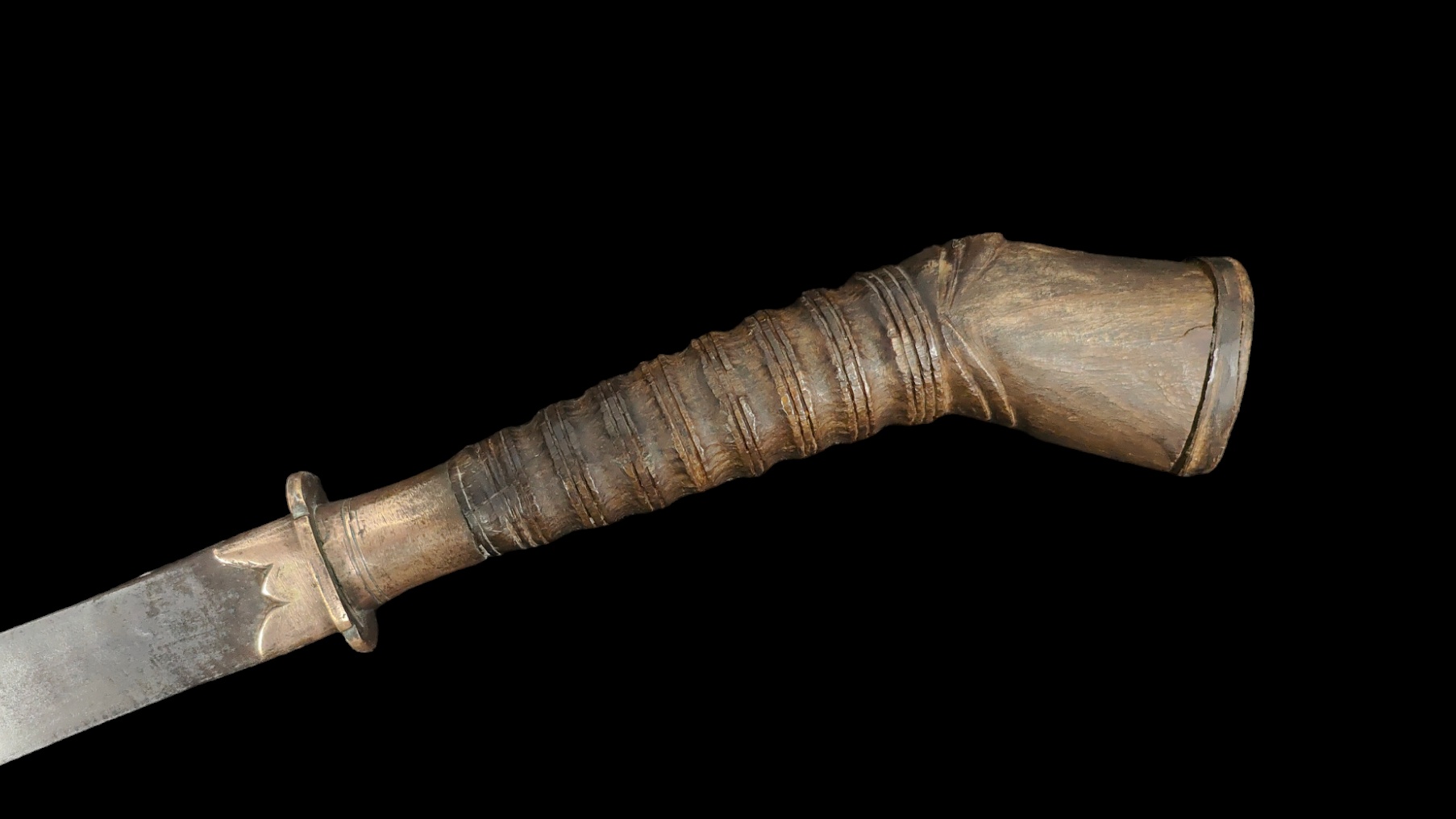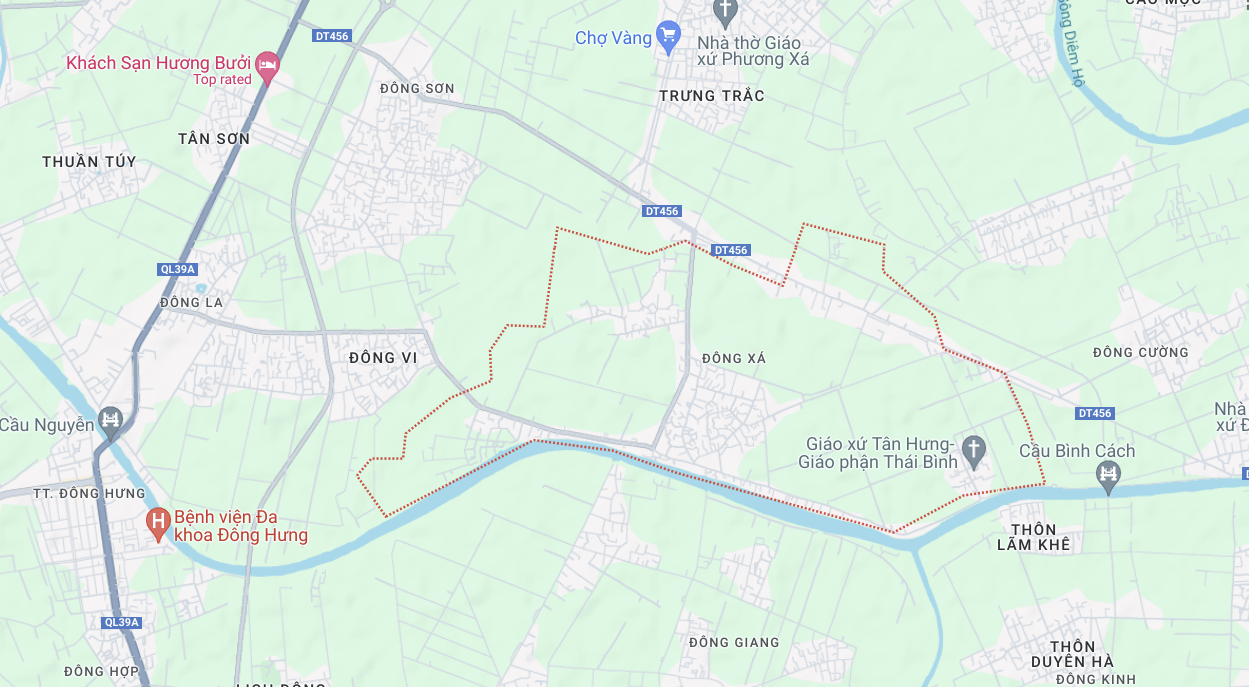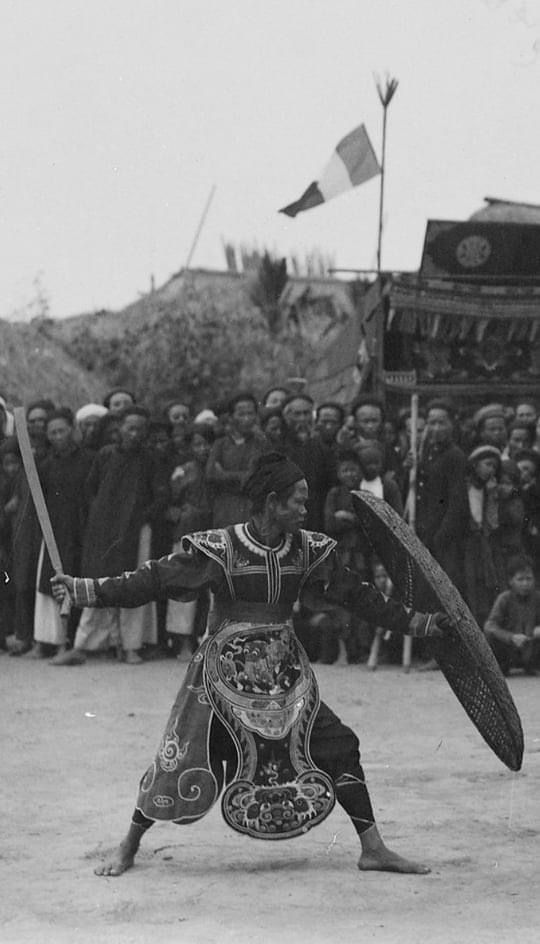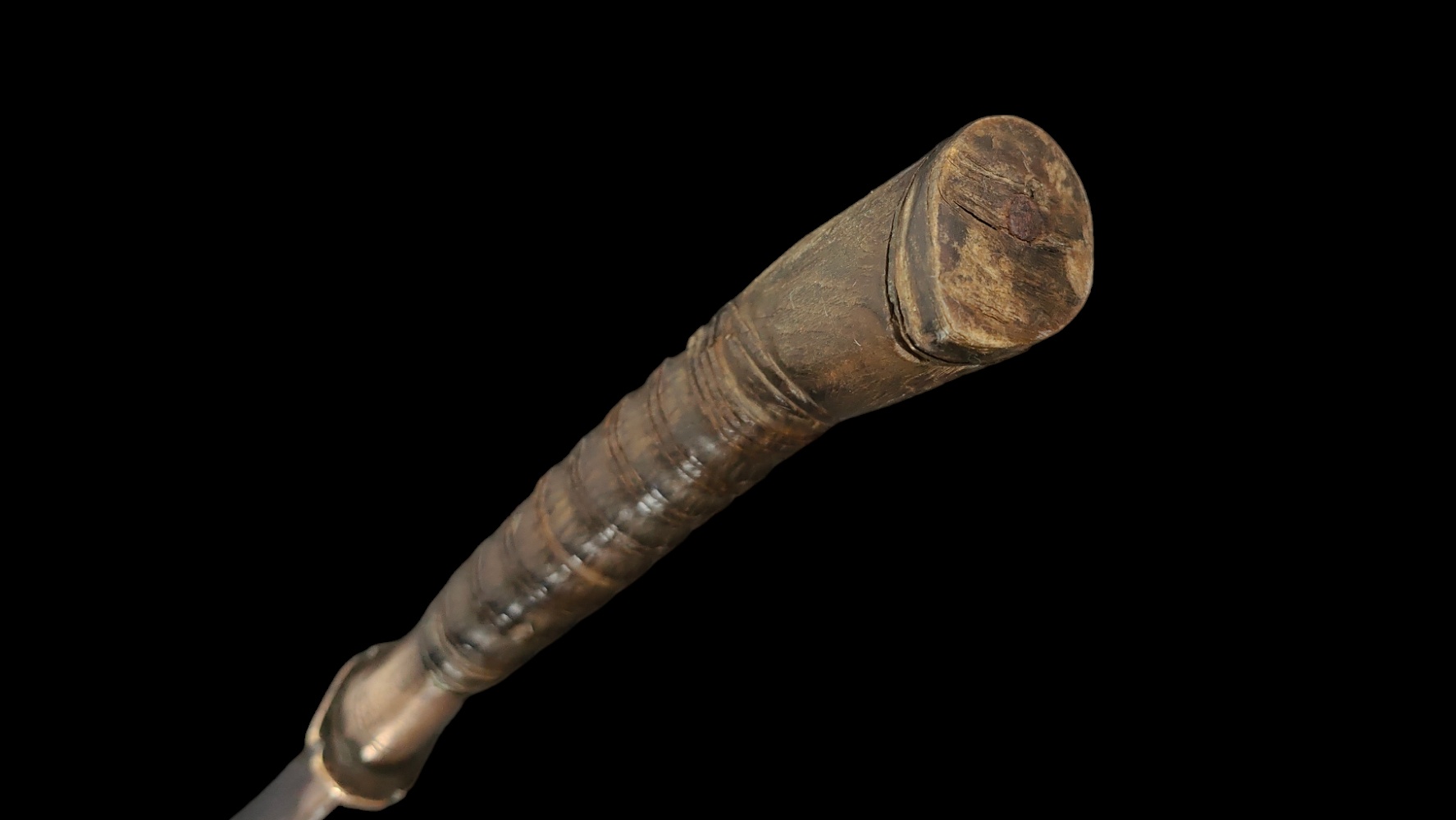
A sword from Northern Vietnam
December 29, 2023 Asian Arms
This intriguing sword is from modern day Northern Vietnam, and likely from the provinces of either Thai Binh or Nam Dinh to the south and east of Hanoi. This was the territory of the Trinh Lords, the unified Nguyễn dynast and later Tonkin under French colonial rule. While the more common Vietnamese sword forms such as the straight kiem, curved variants of the guom and even long guom trong swords are known to collectors there remains a wide variety of less documented sword types in the modern day regions of Vietnam. This sword is one such example.
The most visually striking element of this sword is the hilt, featuring a 'crooked' form and made from horn, likely water buffalo. This hilt shape recalls other sword handles encountered in Vietnam and at odds with more Chinese influenced straight grips.
The blade is of a somewhat unusual style with a clipped tip, rather than the more common pointed forms found in guom. It is mounted with a tonku, or collar where the blade joins the handle, a feature common to Vietnamese arms and also encountered in dha/daab in some cases. The history and use of feature in has been described in a previous article.

Attributing rare and unusual swords is an often hazardous experience, however in this case we are quite lucky. A colonial period series of photographs from the early 20th century shows a local festival at the village of Binh Cach in the Thai Binh province. On modern day maps this falls into the Đông Xá district.

The photographs consist of a series of martial exhibitions such as fighting with pole-arms, wrestling and crucially, fighting with swords and shields. The swords can be clearly seen and have the same crooked hilts and cut tips.

A detailed close up reveals what appears to be a near identical match to the sword under discussion although of a seemingly more basic form and lacking the tonku and more elaborate elements of this example such as the ridged grip.

The dress of the men in these photos would seem to indicate they are of Kinh ethnicity, meaning that these swords were used by the majority Vietnamese population rather than being specific to an ethnic minority group.
The photos clearly show the use of large wicker shields in conjunction with these swords. This makes a great deal of sense once you have handled a sword like this, they are tip heavy and relatively long, designed for chopping strokes. The curved grip naturally positions the hand close to the guard.

The pommel 'plate' is another substantial piece of horn and the 'hoof' keeps the hand firmly in place.

While these period photos seem to date from 1928, this style of sword and shield fighting in Vietnam is much older. Illustrations from European visitors such as Samuel Baron during his visit of the Revival Lê Dynasty during the 1680's clearly depicts very similar fighting exhibitions.

The same style of wicker shield can be clearly seen. It is likely then that this sword style also has a long history and that this example could well date from the late 18th century to early 19th century as later pieces seem to favour simpler iron/steel mounts and lack elements like the large and thick tonku and guard.